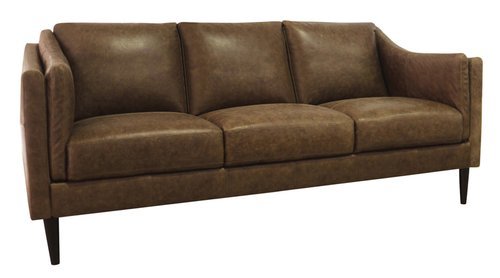Leather Care Instructions
Congratulations on your new piece of genuine leather furniture! Leather is a hardy material that, if cared for, will only get better over time. As our culture shifts more toward a synthetic, temporary, and quick way of consumption, genuine leather offers an alternative: something that is natural, long-lasting, and, more importantly, shows the inherent grace in aging. If not properly cared for, leather may fade and crack over time. To help your piece maintain its timeless looks, you will need to give it the care and attention it deserves. With this in mind, we’ve put together a brief summary on some important things to know, as well as some cleaning instructions to help you care for your genuine leather piece. As always, the Sweet Dreams family is here to help if you have any further questions. We hope you enjoy your new furniture for years to come!
VARIATION
Each piece of leather comes with its own unique characteristics, from the grain to the markings, to the coloring. When leather is tanned, each hide responds differently to the dyes. No two pieces will take the dye exactly the same, and occasionally there will be noticeable dye lot differences. These are considered a natural part of the manufacturing process and are not considered to be a defect. If you wish to purchase a matching piece in the future, it is possible that there is a slight difference in the dye lots. Another thing to note is that all genuine leather will develop what is referred to as a “Patina”. This is a soft sheen that develops through use and exposure on the surface of the leather which provides personality to the product; a manifestation of the natural aging process that is desired by many for its individual and ‘lived in’ nature. To protect and maintain its beautiful and healthy look, you should avoid using any oils or chemicals that will disrupt its natural aging process.
PLACEMENT
You'll want to avoid placing your piece directly in the window or in the sunlight, as too much direct sunlight can cause the leather to fade. You should also place your piece away from any artificial source of heating such as radiators and woodstoves, to prevent your leather from drying or cracking. On the flip side, leather may gather mold or mildew if it is too humid for an extended period of time.
ROUTINE MAINTENANCE
Simple is best, as many products - even those marketed as gentle - can interact in a negative way with the natural Putina of your leather. The best way to care for your furniture is to regularly dust and wipe down the leather. It is recommended that you use a microfiber cloth, slightly dampened with warm water. Ideally, you would use distilled water, as the chlorine in tap water may damage the finish on your leather over time. It will elongate the life of your furniture if you set aside a few minutes each week to follow this process. Take great care not to soak your sofa, as leathers do not take kindly to large quantities of liquid. To get into the nooks and crannies of your sofa, use a vacuum equipped with a soft brush attachment. Steer clear of using all-purpose wipes and sprays which contain chemicals that can damage your sofa. If you wish to use a soft cleaner that is proven and tested to work on leather, it is still advised that you test a small amount on an inconspicuous area of your furniture. Even commercial leather cleaners and leather protection products can cause damage to the Putina of your leather.
SPOT TREATMENT
Leather has a reputation for being more durable than other upholstery materials, and rightly so. However, it is still vulnerable to staining if some liquid or food is spilt. Unfortunately, there will be occasions when you can’t quite get to a spill in time or you aren’t aware of it happening, and it may result in a stain. The course of action will depend greatly on the nature of the spill or stain itself. The first thing you should do is to take a dry cloth or piece of kitchen roll and carefully blot the spillage area — take great care to avoid wiping or scrubbing, as this can ingrain the liquid into the leather. If you are quick enough, the majority of the spill can be absorbed into the cloth before it soaks into the upholstery, removing the need for deeper cleaning. Please note that greasy or oily spillages can be made worse when encountering water, so this should be avoided.
THINGS TO AVOID
DO NOT use the following products; Baking soda, white vinegar, cream of tartar, lemon juice, acetone, wax, cream or oil.
Avoid placing your furniture in direct sunlight, or next to any heating sources.
Avoid contact with heavily embellished clothing, chunky jewelry, keys, scissors, buckles, and buttons as these can cause damage that you might not anticipate.
Be aware that dye from non-colourfast clothing and garments, such as denim, can transfer onto leather/fabric and is usually more noticeable on light leather/fabric colors such as whites, creams and ivory. These chemicals can also break down the finish on your piece.
Consider whether you will allow any pets to jump up onto the sofa, as their claws may accidentally scratch the surface.
Remember the oils from your skin and hair can rub off onto leather, over time breaking down the finish and dye. If you do not routinely clean your piece, the leather where you rest your head or hands may fade. You may choose to put a blanket or throw over the top of your piece if you find that you frequently rest your head in the same position.
Be mindful of lotions and products that you may use on your skin or hair as these can easily transfer onto the leather as well.


